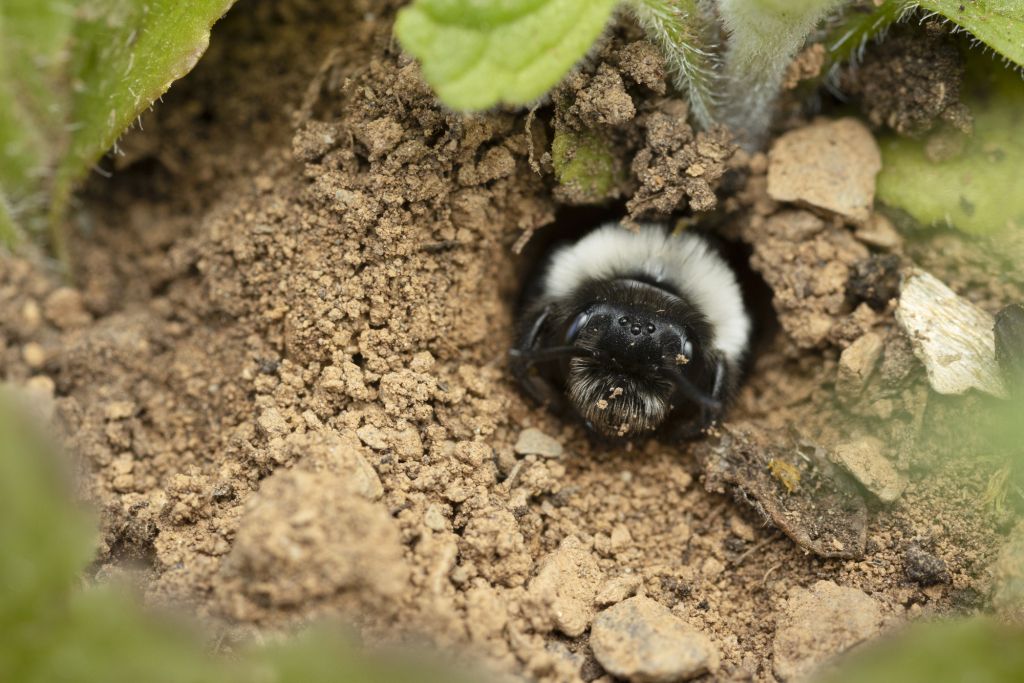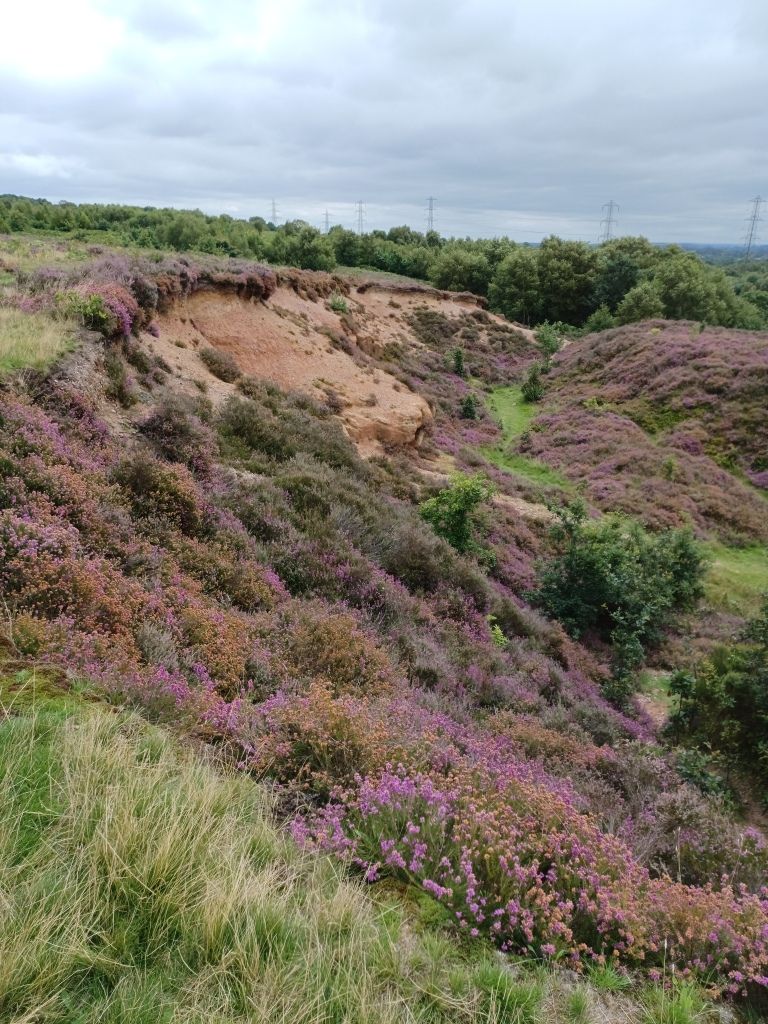Giving ground-nesting heathland bees and wasps a helping hand

Heathland is now considered even more threatened than tropical rainforests and bees and wasps both play important roles in heathland ecosystems.
Britain is home to over a quarter of the world’s remaining lowland heath
Heathland is an internationally important habitat, supporting a huge range of fascinating and highly specialised plants and invertebrates. And it’s now considered even more threatened than tropical rainforests. Britain is home to over a quarter of the world’s remaining lowland heath. And that is despite urbanisiation and agricultural intensification reducing this once expansive habitat to just 16% of its former range across England since 1800. Over 500 acres of lowland heath remains within Birmingham and the Black Country. Many of the region’s rarest and newest bees and wasps can be found here, such as the nationally scarce cat’s-ear mining bee (Andrena humilis) – known because it likes to forage on the yellow flowers of cat’s-ear plants – and noble jewel wasps (Hedychrum nobile) – which are relatively new residents to our shores.
Bees and wasps both play rather important roles in heathland ecosystems. Bees are the main pollinators, with some, like the Tormentil mining bee (Andrena tarsata), being the sole pollinators of some heathland plants. Wasps play a different but equally important role. As predators, they act as biological controls; many specialise in hunting and managing one family or genus of insect such as the weevil specialist sand tailed digger wasp (Cerceris arenaria).
For the past couple of years these sites have been the focus of research and habitat restoration work by researchers and students at the School of Geography, Earth and Environmental Science at the University of Birmingham, the Birmingham and Black Country Wildlife Trust and Natural England. The Purple Horizons Project is focusing on landscape connectivity and targeted habitat restoration of critically important lowland heath sites that support huge numbers of threatened species.
Using bare earth scrapes as basking and nesting sites
Last year, eight heathland sites in the area were the subject of special habitat management. Bare earth patches (literally just that) were created to produce sandy scrapes for nesting insects, specifically solitary bees and wasps. Our new intern Bailey Carswell-Morris is looking at whether bees and wasps have begun using these new scrapes.
Bailey’s being supervised by one of our previous PTES interns – Aaron Bhambra – at the University of Birmingham. You may remember Aaron’s passion for bees and wasps. Since we supported his study, Aaron has gone on to become one of our national experts of these little-studied species. He’s been inspiring and mentoring Bailey, who is monitoring these bare earth scrapes, recording the abundance and diversity of solitary bee and wasp species that use the artificial habitat as either a basking or nesting site. He’s using different methods to collect specimens, such as sweep netting and targeted pan trapping (pan trapping uses small plastic tubs which mimic flowers and attract bees and wasps). Bailey is also recording the surface temperatures of both the bare earth scrapes and the surrounding vegetated areas, to provide data on any temperature differences that may be useful in understanding why some areas are used and some aren’t. Using drones, he’ll also be able to monitor the speed that plants recolonise the bare earth scrapes.
A how-to of bare earth creation and maintenance
Bailey and Aaron’s study will result in a list of which solitary ground nesting bee and wasp species use the artificial bare earth scrapes for nesting and basking. It’ll also produce evidence which can be used to understand what features make them attractive and how long these bare scrapes last. This evidence is needed so that many more artificial bare earth scrapes can be created to increase the amount of suitable areas for bees and wasps in the heathland habitat.
Finally, Bailey hopes this study will generate evidence about the value of introducing grazing animals back into these sites. These will manage bare earth habitat and keep scrubby vegetation from growing up and replacing important sandy nest sites for solitary ground nesting bees and wasps. If we can maintain these habitats using grazing animals, it’ll save huge amounts of time and money in the future.

Thank you to the Elgol Fund for Nature for their generous support of our internship programme.
Header image of ashy mining bee by Bailey Carswell-Morris



